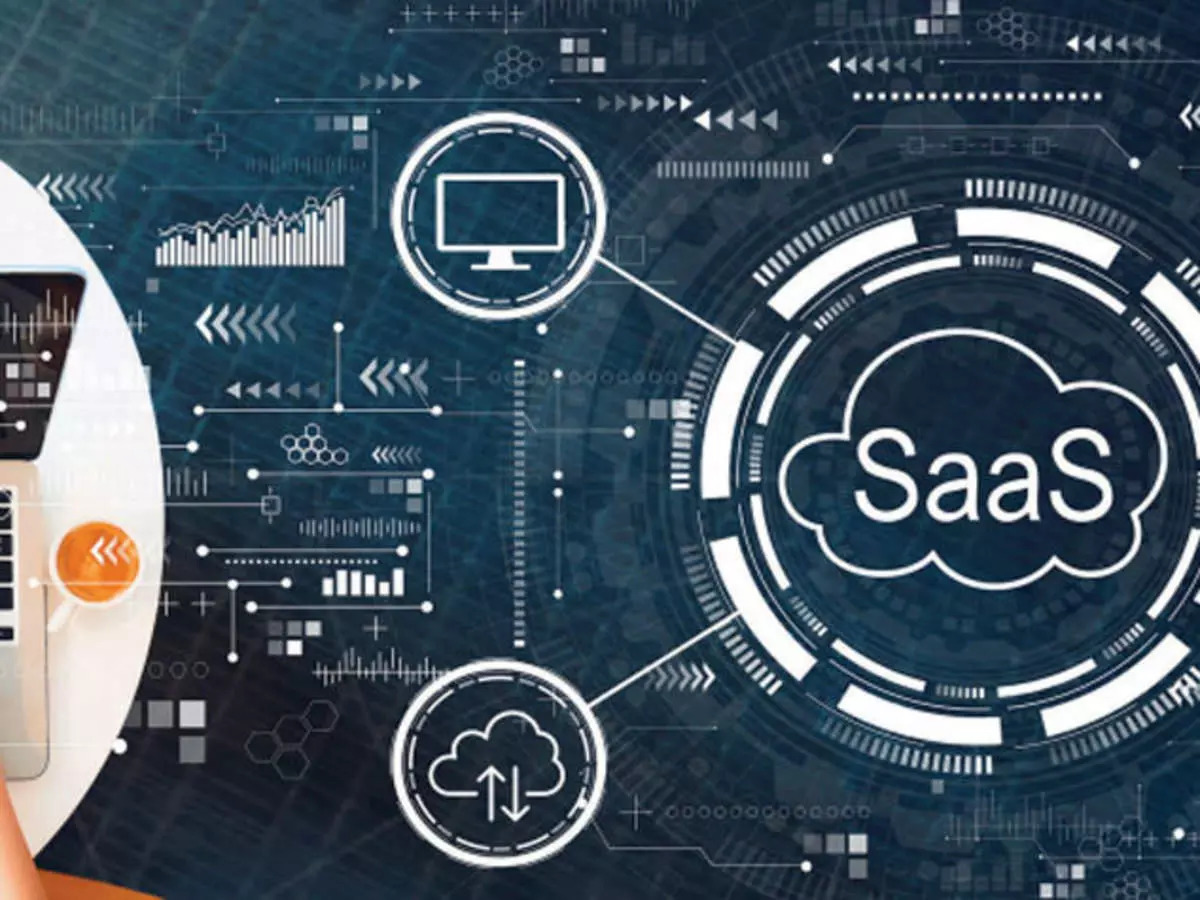The SaaS business has a positive economic influence on the Indian economy.

Even as the industry is now boasting what many experts are referring to as the fundraising winter, we are aware that SaaS firms will eventually rule the market. The simplicity with which SaaS enterprises may service worldwide markets, which is intrinsic to the SaaS model – requiring no on-the-ground human or infrastructure expenditure to grow in any other region – would be to their advantage.
Due to their high growth rates, stable revenue, and appealing margins, Indian companies cannot only compete on an equal footing with their international counterparts but also, in some cases, become market leaders. As a result, they are valued similarly to premium SaaS peers. The low cost of software development and ease of creating new platforms lower the entry barrier, increasing market competition and providing the consumer with a wide range of options.
India is now beset by several inefficiencies that neither the government nor major commercial actors can address owing to a lack of funding or higher priorities. Here, SaaS providers may develop and implement solutions fast by concentrating on a particular issue in an industry or a bottleneck in the supply chain. We observe instances of this in all sectors of the economy, and start-up hubs are also emerging in Tier-2 cities like Jaipur.
Fintech, Edtech, Metaverse, and Web3 technologies have received a lot of attention over the past two years, but given the state of the economy, most businesses are now concentrating on ways to increase efficiency and save expenses. Unstructured data that has terrible record keeping and is unable to offer insights abound in the unorganized sector. The Indian economy will depend on using AI to tackle these issues in the next years, and I advise young entrepreneurs to concentrate on domestic issues so that we can advance more quickly.
Advice for Indian SaaS startups to support themselves in areas where funding has crashed
Hyperfocus on Product-Market Fit: I won’t be the first to provide this advice, but pay close attention to how well you understand the issue you’re trying to address and devote plenty of time and effort to identifying the best possible product-market fit. Getting additional users will be simpler after you have product-market fit and the first few customers who adore your product. Set priorities, then set priorities again: Only concentrate your resources on a select few things and remove everything from your product roadmap that does not add 10X differentiation.
Keep in touch with your customers: You might not have the resources to bring in a lot of new ones, so speak with them more frequently to learn how they use your products, how you can make them even better, and whether there are any other opportunities for new revenue streams.
Reduce advertising expenditures and make long-term plans: Create an internal demand-gen engine with the help of your product marketing, product, and sales talent, and ask them to grow an audience through organic channels. Overcommunicate internally: This was very helpful during COVID as weekly updates to the company on how things are going helped to unify everyone around the goal of cutting costs, doing more with less, and increasing our success.
Growth of the software as a service sector
Software as a Service (SaaS) is a cloud-based subscription service that makes software readily available online. It eliminates the requirement for you to download software onto your computer and can thus offer ongoing updates and support. Over the past ten years, the SaaS industry has been expanding steadily. The market will be worth 157 billion dollars in 2020, which is a twofold increase from 2014. The three companies with the largest market shares in the global SaaS market are Salesforce, Microsoft, and IBM.
Technology advancement, consumer behavior, and demand all play a role in the market’s expansion. Recently, the market has increased due to outside influences like the COVID epidemic. Businesses have been forced by the pandemic, according to Gartner, to concentrate on “preserving cash flow and optimizing IT costs, supporting and securing a remote workforce, and ensuring resiliency.” Spending on cloud software and infrastructure after the pandemic is only anticipated to rise.
The terms “vertical SaaS” and “horizontal SaaS” refer to two different sorts of software as a service model.
Established cloud services like Salesforce, Microsoft, Slack, Hubspot, and others make good use of a horizontal SaaS framework. The horizontal business model enables large companies to operate profitably and effectively while serving a wide range of clients from various sectors. It is simpler to expand or package their offering with the model. In other words, businesses may broaden their services to include a range of SaaS categories under a single roof. Google Hangouts and Microsoft Teams, for instance, are examples of communication solutions created by Google or Microsoft.
Vertical SaaS solutions, on the other hand, are developed to target a particular or niche sector. Examples include trade, insurance, or an underserved market. The concept concentrates on the sector’s verticals and develops remedies for the demands and problems of the specialized industry. Consider Toast software for the restaurant business or Guidewire, a SaaS service that solely develops software for the insurance industry. There are different types of SaaS applications that offer software solutions based on your company’s needs, those of your industry, or those of your clients.
CRM stands for customer relationship management.
Customer information is a priceless asset for every organization. CRMs enable organizations to efficiently and securely collect and retain all of their customer data. Effective customer data storage may enhance customer connections, customer segmentation, and data privacy protection. B2C businesses, or those that sell directly to consumers, are the most frequent users of CRM software. The sales, marketing, and customer support teams inside such firms are the departments that utilize CRM software. With the aid of CRM software, users can forecast, automate repetitive tasks, and scale processes over time. They can manage customer communications and customer data across your entire organization in a centralized database.
Human Resources (HR)
Every organization has a human resources (HR) division. They are in charge of hiring, training, and supporting staff members as well as handling employee benefits. Business customers can benefit from a variety of HR SaaS software options. the capacity to oversee employees‘ work schedules, vacations, sick days, and other matters.
Additionally, the software can track an employee’s performance and length of employment to retain valuable staff. The HR department plays a crucial role in a company by keeping workers informed and communicating with them. Keeping staff members informed, involved, and productive fosters the development of the company’s collaborative culture.
The HR SaaS software programs Breathe HR, People HR, and Bullhorn are frequently employed. All of them are available in our library of pre-built SaaS application connectors, and you can learn more about how to use them in your integration strategy there.
Accounting/Billing
Any firm must keep track of its finances. Therefore, account and billing SaaS software solutions may provide the customer with a wide range of advantages. They aid in the management of budgets, transactions, and cash flow. Time and effort may be saved by using a SaaS application to handle a company’s finances. Particularly in terms of time spent on account reconciliation, accounting mistakes, data entry, payroll, taxes, and client payments.
Accounting and/or billing SaaS software is frequently used in the banking, business services, manufacturing, retail, and government sectors. The well-known SaaS providers for accounting and billing include Quickbooks, Chargebee, and Chargify.
Communication
Software as a service (SaaS) tools for communication, such as Zoom and Slack, have enjoyed extraordinary adoption over the past year. Email, phone conversations, and in-person meetings have been replaced by chat messaging, video, and/or audio calls as a result of communication-based software solutions. Employees may share and discuss projects when a communication SaaS is linked with collaborative SaaS providers like Google Drive.
Enabling functions like automatic in-app alerts for updates. In one location, seamless service delivery, improved teamwork, and communication are possible. Do you want to know how SaaS communication software might be used in your company? In our Connector Library, you may discover Slack, Zoom, and more services.
Project Management
Businesses frequently manage several projects at once, or at the very least, projects are managed within teams. A SaaS for project management can assist organizations or teams in maintaining organization and control over their ongoing projects. They provide one-stop planning, tracking, allocating, scheduling, communication, and team collaboration on projects. PM SaaS can track who on your team has completed what and display the project’s evolution. Teams can manage projects, plan tasks, and maintain high productivity using Trello, a project management tool.
Project Administration Larger companies frequently use SaaSs in sectors like services (IT, consulting), finance, marketing, and advertising. Several well-known SaaS providers are Basecamp, GitHub, and Trello.
E-Commerce and Content Management Systems (CMS)
A CMS is often a low-code toolkit or web-based software that enables users to build websites or apps. It enables users to create, manage, and alter information without the requirement for technical expertise or coding experience. A great example of a CMS that offers website building blocks is WordPress. Shopify is an e-commerce example that enables business owners to add products, edit content, and keep track of changes.
There are several advantages to using content management systems. They are cost-effective, scalable, user-friendly, quick to deploy, easy to maintain, and have built-in SEO advantages. The promotion of new items, the publication of articles, and the management of social media all employ CMS systems.
Enterprise Resource Planning (ERP), Customer Experience, Marketing/Email, Product Management, and others are other popular SaaS solution categories. For more information, visit our existing, ready-made SaaS connector library to view all of our SaaS connectors.
edited and proofread by nikita sharma




